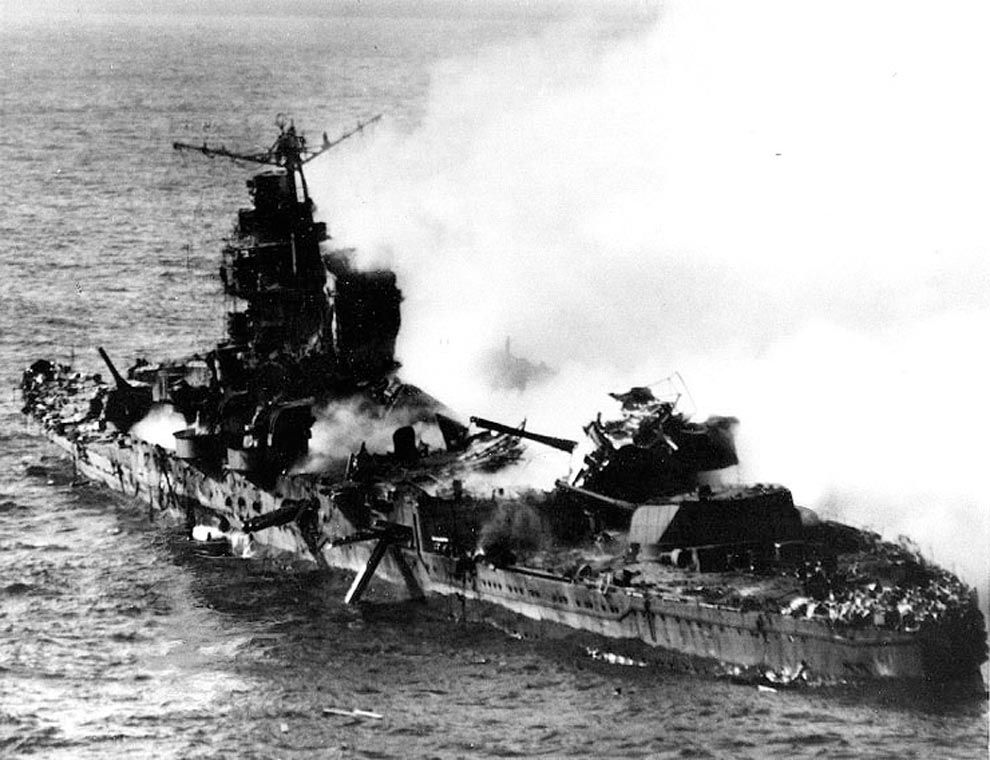Japan's supposed advantages in the Pacific did not last forever though. In early 1942, U.S. Navy crypt-analysts were able to intercept and decrypt Japanese communication messages, learning about the planned attack on the location referred to as "AF". The navy suspected that it would be Midway, occurring on either June 4th or 5th, alongside the planned order of battle. The U.S. was able to prepare a counterattack in advance, weeks before the Japanese attack.
On June 3rd, the Japanese attacked the Aleutian Islands, and the U.S. Navy was quick to respond with several B-17 Flying Fortress bombers, who falsely thought of the force to be the main fleet of the attack. Shortly after, 108 Japanese warplanes struck midway, following the original plan, which severely damaged the base. Many unsuccessful engagements followed, with the U.S. Navy failing to combat the Japanese forces. It wasn't until a later wave of U.S. carrier-launched bombers successfully hit 3 Japanese carriers, setting them ablaze and destroying them. In the end, all four Japanese carriers present were destroyed. The Japanese ships retreated on June 6th, with casualties totaling as many as 3,000 men, 4 aircraft carriers, 300 aircraft, and one heavy cruiser being lost in the battle. The U.S. Navy saw 360 casualties, with 145 aircraft, alongside the USS Hammann destroyer and the Yorktown carrier being lost.
 |
| The Japanese Cruiser, Mikuma |
The Battle of Midway proved to be a decisive victory for the U.S., as it turned the tide of the war in favor of the Allies in the Pacific. Japan was stopped completely from expanding outwards into territories within the Pacific, and they instead assumed a defensive role for the remaining 3 years of the war.
Sources:
https://www.nationalgeographic.org/thisday/jun4/battle-midway-begins/
https://www.history.com/topics/world-war-ii/battle-of-midway
https://www.britannica.com/event/Battle-of-Midway

This was quite interesting to read, especially because there was a movie just released about this battle. After Pearl Harbor, this was a much needed victory for the US against the Japan, allowing us to move into the offensive position in the Pacific Campaign. This was also a crushing defeat for Japan, as their first line carrier strength and best naval pilots were destroyed.
ReplyDeleteI enjoyed how you were able to explain the details and events leading up to the Battle of Midway. As you stated, after the war, Japan remained defensive for the following three years until the year ended. Around two years after the Battle of Midway, the Japanese military and military leaders realized that it would be nearly impossible for them to become victorious in their war efforts. They continued their fighting until the US dropped to atomic bombs on Japan, which caused them to surrender.
ReplyDeleteSource: https://www.history.com/topics/world-war-ii/hirohito-1